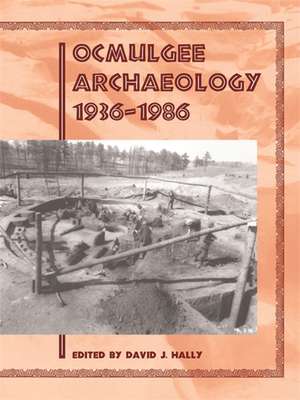Ocmulgee Archaeology, 1936-1986
Editat de David J. Hallyen Limba Engleză Paperback – 31 oct 2009
From 1933 to 1941, Macon was the site of the largest archaeological excavation ever undertaken in Georgia and one of the most significant archaeological projects to be initiated by the federal government during the depression. The project was administered by the National Park Service and funded at times by such government programs as the Works Progress Administration, Civilian Conservation Corps, and Civil Works Administration. At its peak in 1955, more than eight hundred laborers were employed in more than a dozen separate excavations of prehistoric mounds and villages.
The best-known excavations were conducted at the Macon Plateau site, the area President Franklin D. Roosevelt proclaimed as the Ocmulgee National Monument in 1936. Although a wealth of material was recovered from the site in the 1930s, little provision was made for analyzing and reporting it. Consequently, much information is still unpublished.
The sixteen essays in this volume were presented at a symposium to commemorate the fiftieth anniversary of the founding of the Ocmulgee National Monument. The symposium provided archaeologists with an opportunity to update the work begun a half-century before and to bring it into the larger context of southeastern history and general advances in archaeological research and methodology. Among the topics discussed are platform mounds, settlement patterns, agronomic practices, earth lodges, human skeletal remains, Macon Plateau culture origins, relations of site inhabitants with other aboriginal societies and Europeans, and the challenges of administering excavations and park development.
Preț: 256.76 lei
Nou
49.13€ • 50.76$ • 40.87£
Carte tipărită la comandă
Livrare economică 19 martie-02 aprilie
Specificații
ISBN-10: 0820334928
Pagini: 256
Dimensiuni: 210 x 279 x 13 mm
Greutate: 0.58 kg
Editura: University of Georgia Press
















